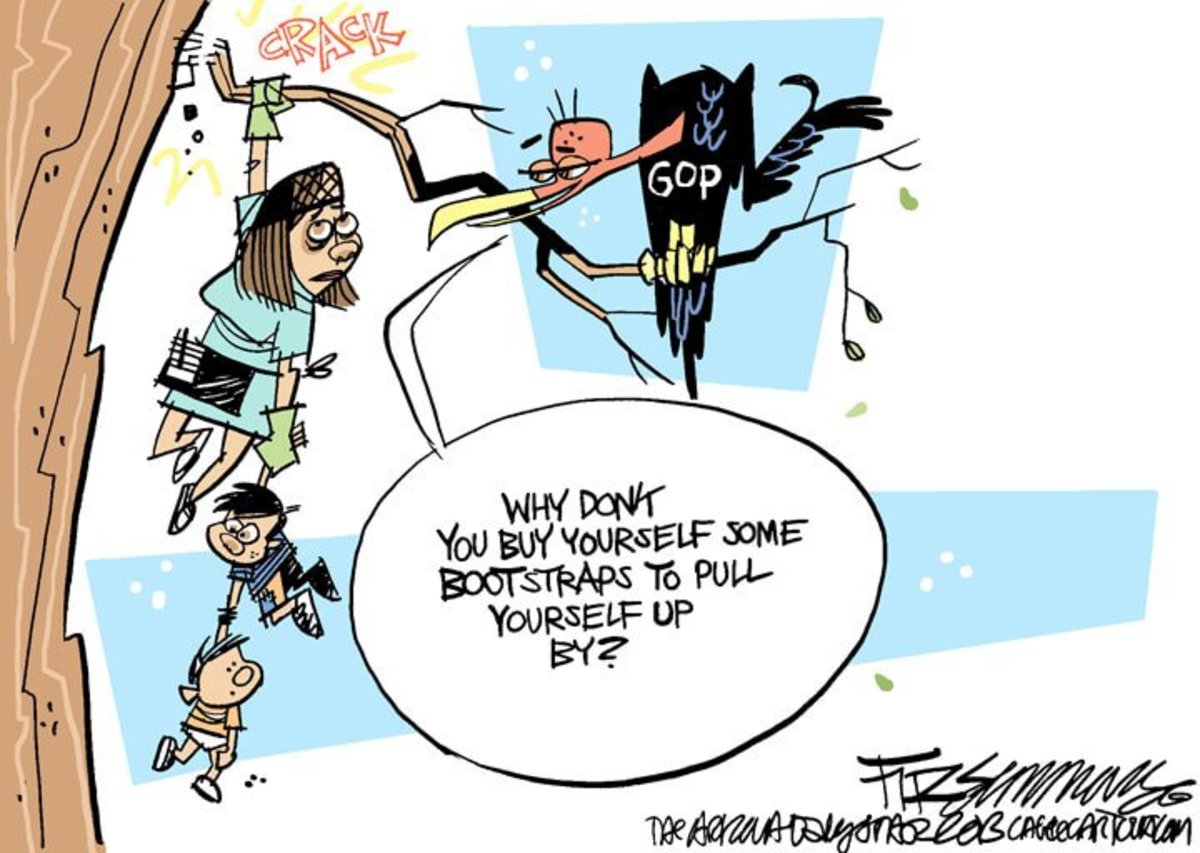Operation Bootstrap and la Operación: systematic oppressions?

"Why don't you buy yourself some bootstraps to pull yourself up by?"
Operation Bootstrap
Background
Operation Bootstrap, or Operación Manos a la Obra, was a strategy implemented in 1948 by popularly-elected Puerto Rican Governor Luis Muñoz Marín to industrialize Puerto Rico and pull the island into the modernized Global North. His plan was two-fold:
- Invite U.S. corporations to establish themselves on the island.
- Create and utilize a cheap, Americanized Puerto Rican labor pool (class notes: Monday, April 9).
Consequences
Puerto Rico experienced rapid industrial development and economic growth for two decades, but the Operation had many unintended consequences, including an unwonted devastation of natural resources and an unprecedented increase in emigration from the island to the mainland U.S. (a million Puerto Ricans left the island between 1945 and 1970; between 1940 and 1960, the number of Puerto Ricans in the mainland U.S. increased from 70,000 to 888,000, most choosing to relocate to New York City) (class notes: Monday, April 16). The switch from a cash crop-based economy to a manufacturing-based economy did not provide enough jobs to replace those lost in the agriculture business.
"Successes" of Operation Bootstrap:
-Life expectancies increased
-Birth rates decreased
-Per capita income incr.
-PRs moved to urban areas
BUT it ultimately failed because cities did not have enough jobs to compensate all the ppl moving there, and unemployment skyrocketed. #LATS3— Madelyne (@dartmouthmaddy) April 23, 2018
Although Puerto Ricans were in despair, in large part due to Operation Bootstrap, they were not eligible for food stamps under the U.S. government until 1978. Overnight, 2/3 of Puerto Ricans qualified.
La Operación
With newly-industrialized cities bursting with unemployed people, a dialogue arose throughout the U.S. regarding the perceived overpopulation of Puerto Rico. In reality, Puerto Ricans simply lacked access to jobs and resources once they relocated to urban centers. However, a new way of dealing with the perceived population problem arose in the 40s and 50s: female sterilization.
A policy of population control led many pregnant Puerto Rican women to be unknowingly or non-consensually sterilized following C-section child births.
A policy of population control led many pregnant Puerto Rican women to be unknowingly or non-consensually sterilized following C-section child births. Doctors would cut and tie the women's fallopian tubes to prevent future conceptions from occurring. As stated in the film, La Operación (Ana María García, 1982), "One third of all Puerto Rican women have been sterilized. So common is the method that it is simply known as 'la operación'."
The women sterilized were given a consent form to sign before their C-section that was often in English instead of in Spanish. Furthermore, doctors often failed to explain to these women before they went into surgery exactly how sterilization was going to occur, or that it was irreversible. As a result, many of these women--afraid they would die if they didn't get the surgery immediately--quickly took their doctor's word for it and signed, blindly.
However, in her book Reproducing Empires, Laura Briggs points out that "sterilization" as a systemic process of oppression may not have ever actually occurred. Certainly, Latina women in Puerto Rico (and in L.A. as seen in No Más Bebés, Renee Tajima-Peña, 2015) underwent la operación and became sterilized. But, she points out, immediately delineating the process as "forced" or "genocidal" may actually be silencing to Puerto Rican feminists, who might not wish to describe the procedure in those terms. It is also true that there was no actual, explicit sterilization campaign implemented in Puerto Rico. But most importantly, Briggs brings up the important point about Puerto Rican and Latinx agency.
But, she points out, immediately delineating the process as "forced" or "genocidal" may actually be silencing to Puerto Rican feminists, who may not describe the procedure in those terms.
Puerto Rican and Latina women in L.A. did sometimes choose to have the operation done. Most Puerto Rican and Latinx feminists were actively seeking birth control (although not all would say that sterilization was quite what they intended). Ana María García, the director of La Operación, who is from the mainland, no doubt has been influenced by mainland feminisms. Despite whatever intentions she may have had in creating La Operación, her working-class interviewees can actually be heard saying "Me operé" ("I operated on myself") in regards to the procedure, which suggests that the Puerto Rican women who received the operation did not actually see it as a third-party infliction on their bodies.
Looking In: Laura Briggs provides alternative evidence that suggests the Puerto Rican mass sterilization wasn't systemic or a campaign by the government, however, I don't think the situation that lead to 30% of Puerto Rican women to be sterilized was without some influence #LATS3
— Alec Eschholz (@Alec_Eschholz) April 23, 2018
It is extremely important to keep in mind that agency is very quickly lost in situations of perceived or legitimate oppression. In this case, it is important to ask the women who were sterilized themselves what they think about the situation, and to raise up the voices of Puerto Rican- and Latinx-feminists, instead of speaking for or over them.
Agency comes in many forms. It is as much how one speaks as what they say. #LATS3
— Matt Garcia (@mattjgarcia68) April 15, 2018
I will conclude with an attempt at returning agency to Puerto Ricans. This message is from 2015 from Puerto Rico to the U.S. government (read: before Hurricane María). Maybe with an increase in agency will come an increase is actually-effective legislation and progress, both between and within Puerto Rico and the United States.
To a more just society, and world. ~